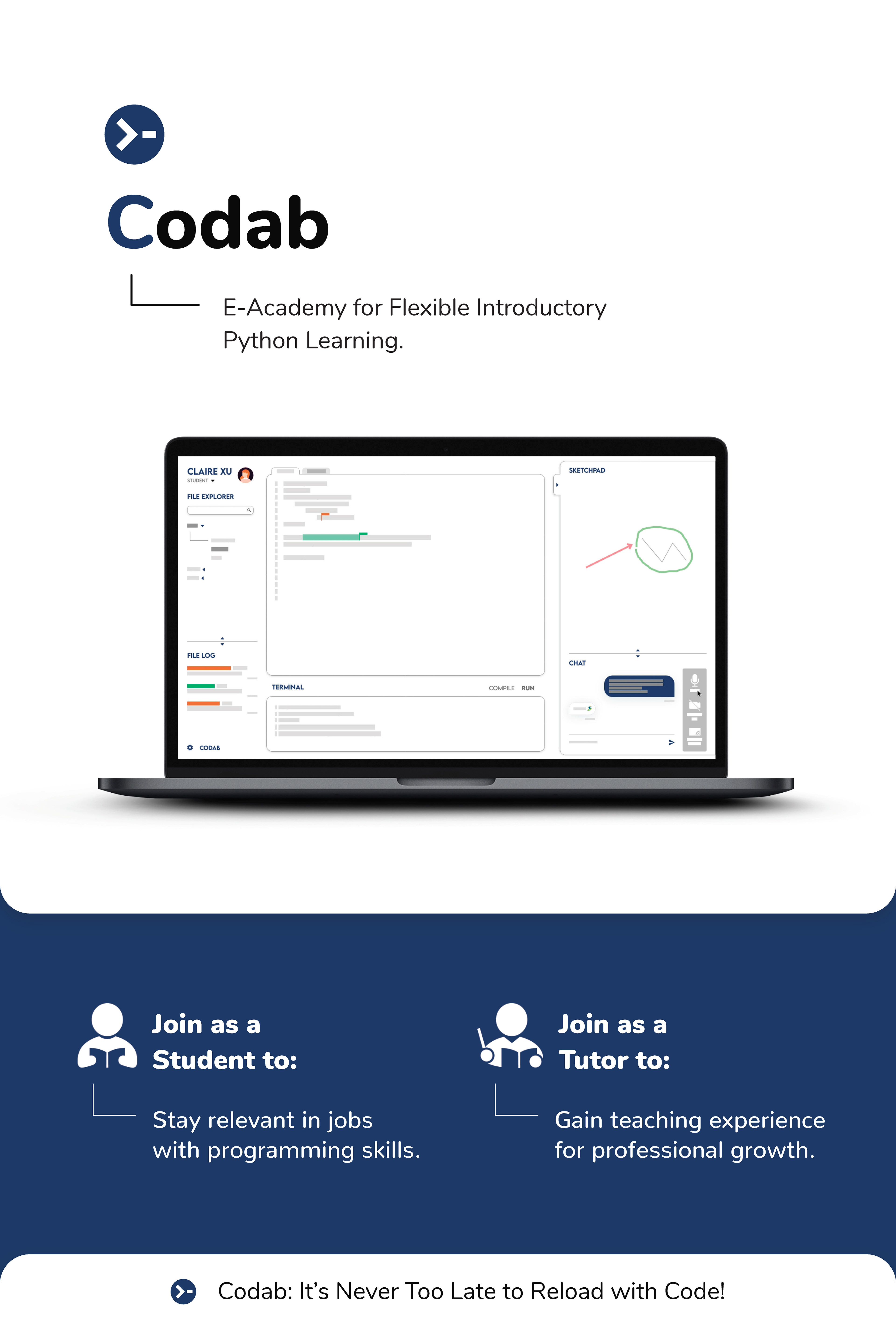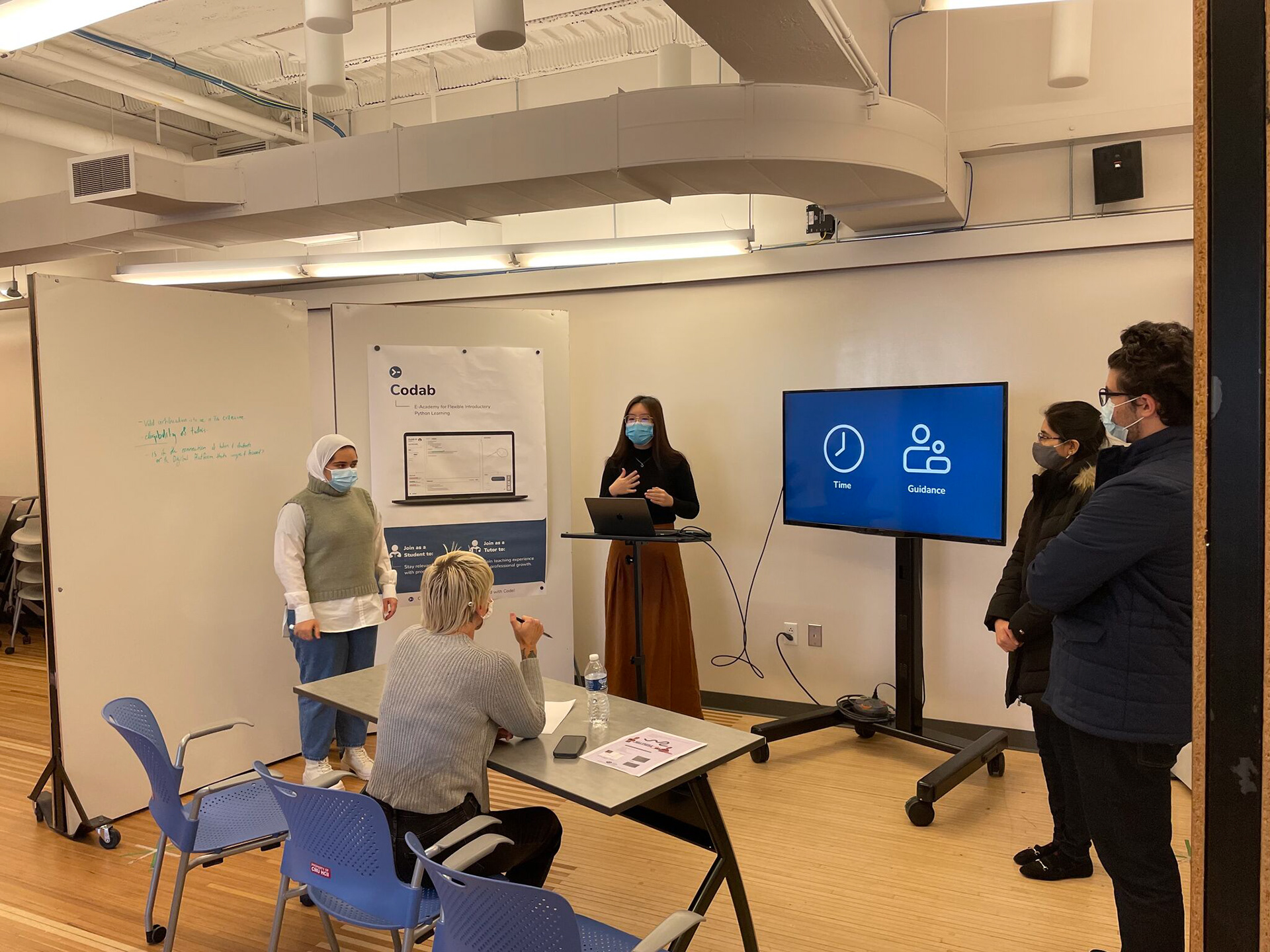"1 in 3 working Americans say they feel pressure to learn new tech-related skills to protect their jobs."
-Economic Times
This is a project designed with Andria Atalla, Bhavya Sachdeva and Yara Al-Shakhs for the class 05470 Digital Service Innovation at Carnegie Mellon University. For this project, the team conceives of a software-based E-Academy startup for flexible introductory python learning. Our service aims to provide learning opportunities for those in the workforce who have no prior experience in python but are interested to learn due to increased market demands.
Through design thinking, service thinking, and the methods and practices used by lean startups, our team designed a new software startup that is economically viable, technically feasible, and desired by customers. We learn to abandon an idea at the correct point in the design process and pivot to a new idea that shows greater promise for creating value.
Duration: 6 weeks
Instructors: Skip Shelly & Adam Paulisick
PROCESS OVERVIEW
1. Initial Pitch & Knowing the Team
Working individually, we each envisioned a digital service start-up through ideations and research and pitch it to their classmates in order to convince them to join our team. Codab originated from one of our team member Andria’s initial pitch to the whole class as a service dedicated to “CODing collABoration”. The idea started from the need to find a substitute for the existing, inefficient monopoly for collaborative coding. Combining the Economical, Social, and Technological factors permitted the discovery of an opportunity gap that could be filled: a synchronous collaborative coding platform.
After a successful initial pitch and achieving the 8th out of 52 pitches on the investment board, the rest of us (Bhavya, Yara, and Claire) decided to firmly invest in Codab and formed a team with Andria to move on researching the existing services and how we are planning to be distinctive from existing competitors. We made sure to know each other's expertise, responsibilities, and goals before diving into the intense 6 weeks of trials and errors.
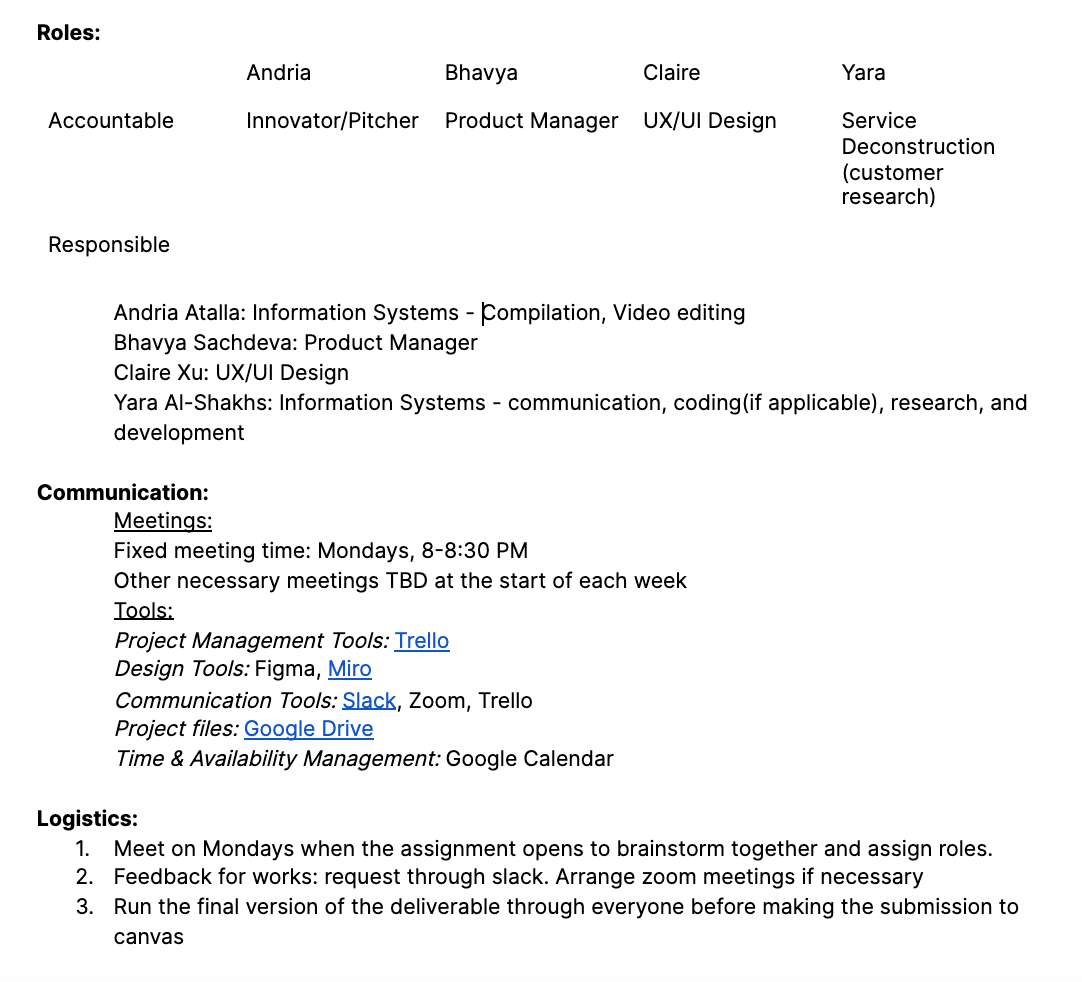
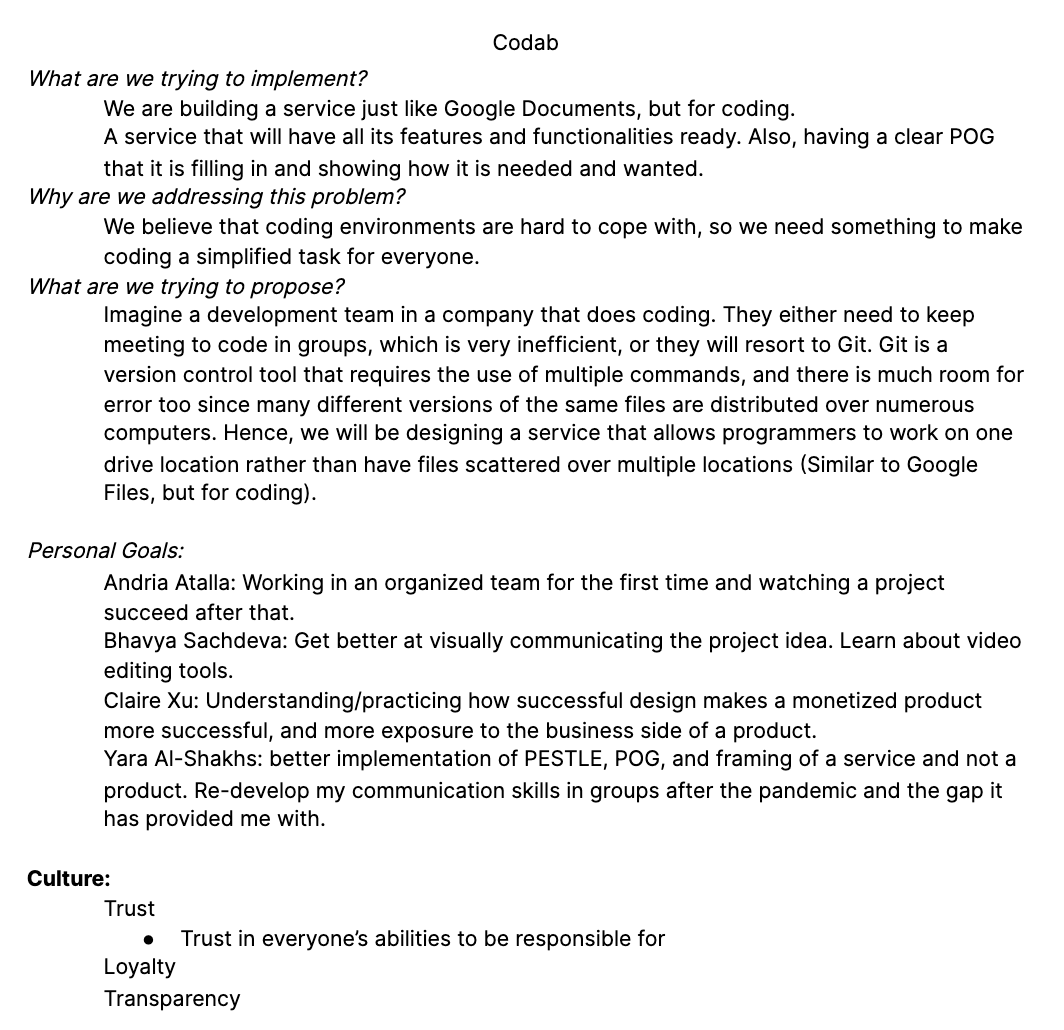
2. Opportunity Framing & Primary/Secondary Research
After doing an analysis of the existing market, we found competitors such as Github, Visual Studio Code’s Live Share, and Atom’s Teletype. These make use of collaborative programming, but they lacked the part where files are accessible to everyone at all times, and oftentimes multiple software was required for a collaborative project at once (such as the use of zoom, google drive, etc). This was something that we were willing to make ease of through our service.
After opportunity framing, we conducted primary research with potential users to gain better understandings of user needs. Research methods included in-person interviews and email questions, and interviewees included University students who took coding classes, CS Professors/TAs, and working professionals in CS-related fields. We asked them about their past experiences of collaborative projects (if any), and how they tackled them both technically and socially.
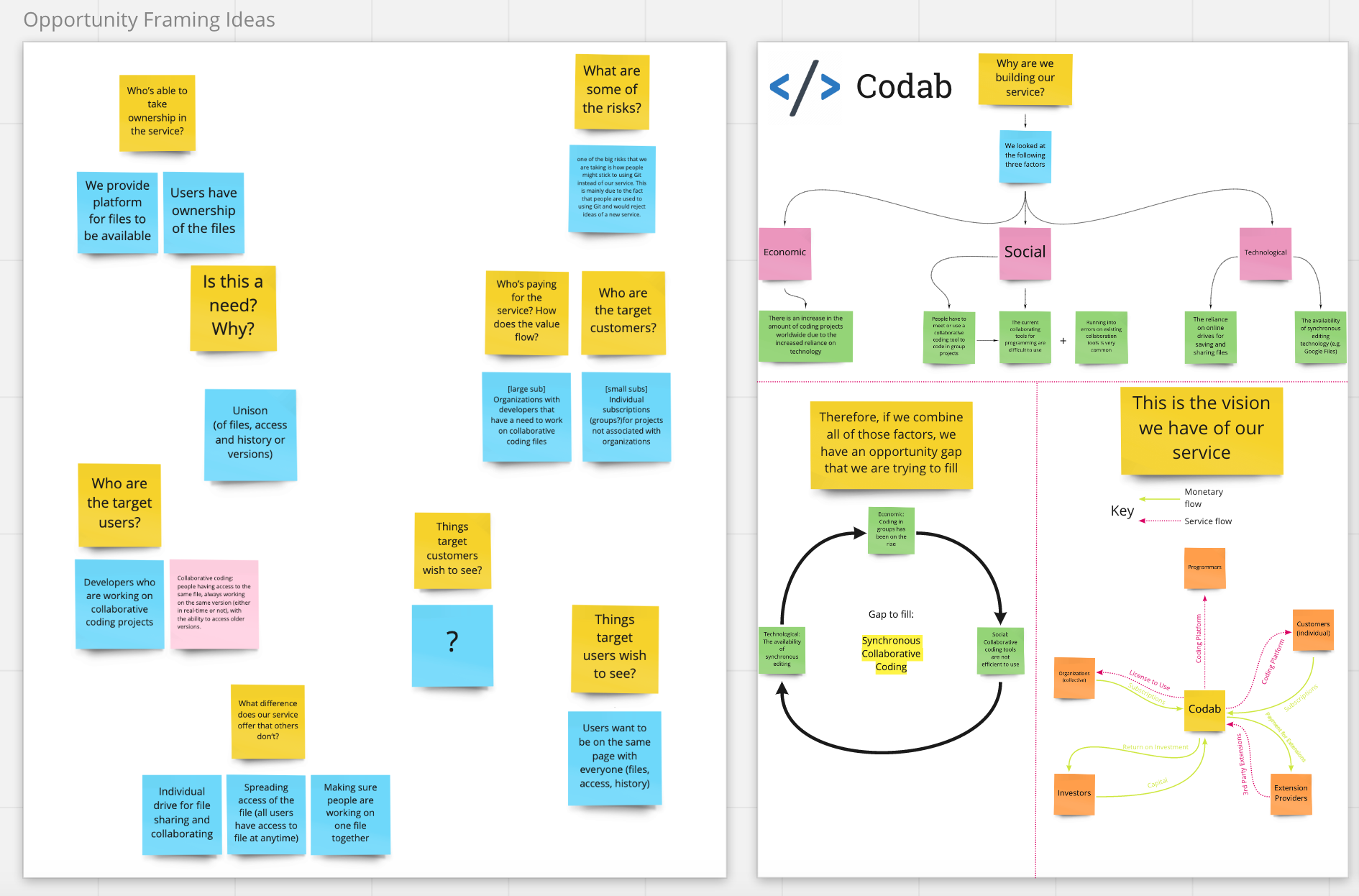

3. MVP 1 & Validations
Through primary research, we discovered that collaborative coding challenges don’t really happen among the working professionals, and appear more frequently in student group projects for classes. Thus we decided to focus our user groups on students, and create a first Minimum Viable Product (MVP) to test if our hypothesis.
For MVP 1, we didn’t want to restrict ourselves immediately with a digital prototype. Thus, we decided to conduct a physical “working session” with us acting our certain features of the MVP and to physically see how students collaboratively work to solve a problem. We recruited and instructed 3 participants and organized an interface on the whiteboard for them to work, and divided responsibilities amongst ourselves before conducting the validation session: Andria the “computer”, Claire the “Codab” interface, Bhavya the video recorder, and Yara the note-taker. During the session, only Claire was interacting directly with the users.
After the session, our questions for the users revolved around two key ideas: 1. Does the service create value? 2. Is this something they’re willing to pay for?
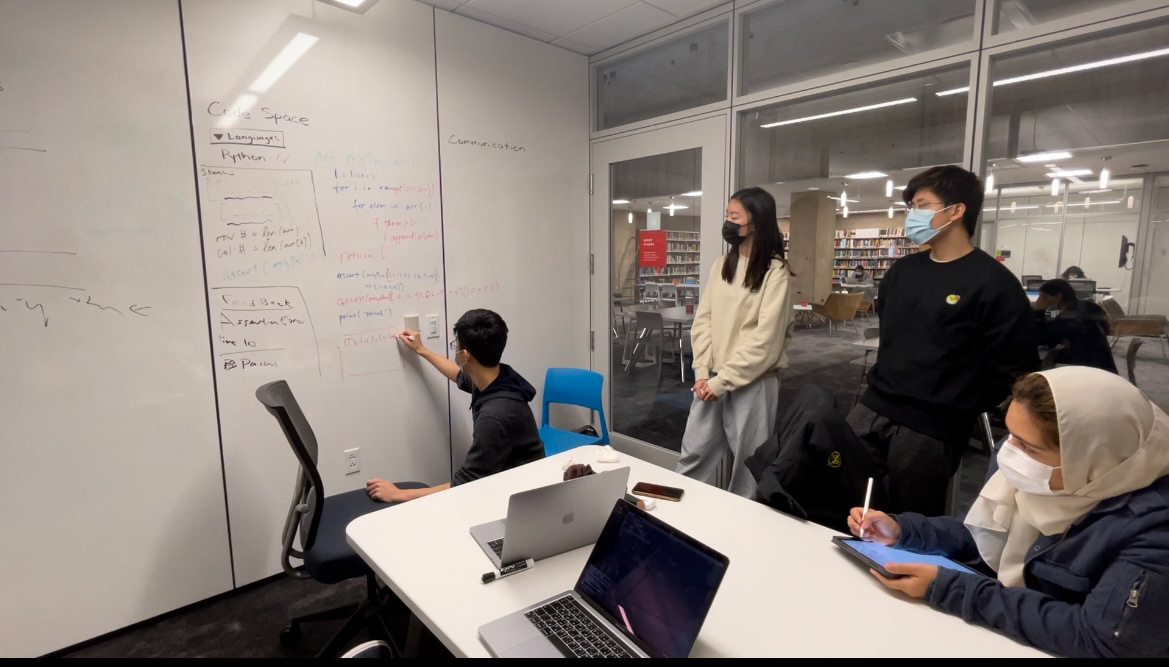
4. MVP 2 & Validations
Overall, the participants in MVP 1 thought the collaboration needed in coding is more seen in beginners. For coders who are more advanced, this type of hands-on collaboration is less desired. They also wondered if Codab could be used in universities for group projects or office hours as well as beginner courses. From here we derived two potential pivots: either to develop Codab with the potential to partner with universities or to construct an online programming tutor market space. Both, however, would focus on introductory python classes only.
For MVP 2, we decided to choose the first pivot, which is targeting universities as our customers and students as our users. The aim is to partner up with universities for our service to be implemented in classroom settings. We designed a workspace prototype and created two types of representations.
The interface on the left is a more refined prototype, which we used to conduct customer validations (professors), and we mainly asked them about whether they would implement this in their classes.
The drawing on the right is a sketch that we used to conduct user validations (students), and we mainly asked them about design composition and usability improvements.
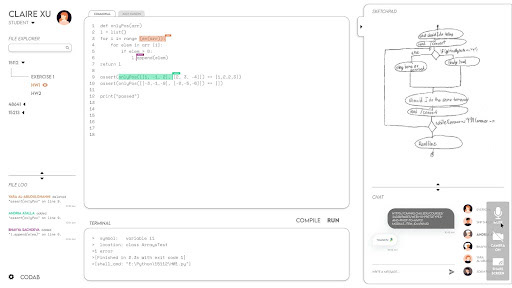
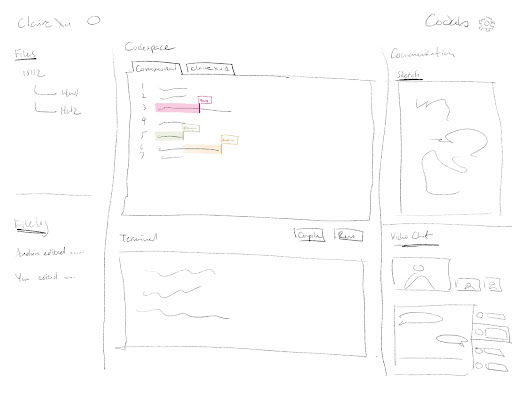
5. Final Pivot & Preparing for Investor Showcase
With MVP 2 and allowing customers/users to see the service designed, the professors didn’t think this service was sufficient enough to be a stand-alone service, and the students questioned that if collaborative learning is strong enough as a need for innovative service.
After spending time discussing all our feedbacks, we went back to the “need”. Through MVP 1 and MVP 2, we found out that although not put into words, our fundamental focus is actually education. The need to be educated with programming, and to utilize that knowledge for personal growth, that’s the key focus. University students, although learning is essential, they already have lots of tools and opportunities. Then who are the ones who don’t have those tools/opportunities? Perhaps those who graduated a long time ago, and didn’t have a chance to learn to program in college, or even GO to college.
Everything became clearer afterward: Our service aims to provide learning opportunities for those in the workforce who have no prior experience in python but are interested to learn due to increased market demands. Although this was a huge pivot at the later stage of the project, we still decided to make the necessary change. We were brave enough to pivot to a new idea that shows greater promise for creating value.
After finalizing our direction, we started to iterate the materials needed for the investor showcase, where we present our ideas to 11 investors and aim to gather "fundings" for our innovative service. We created a 1-min video and poster to send to investors before the showcase and also prepared for the pitch/Q&A.
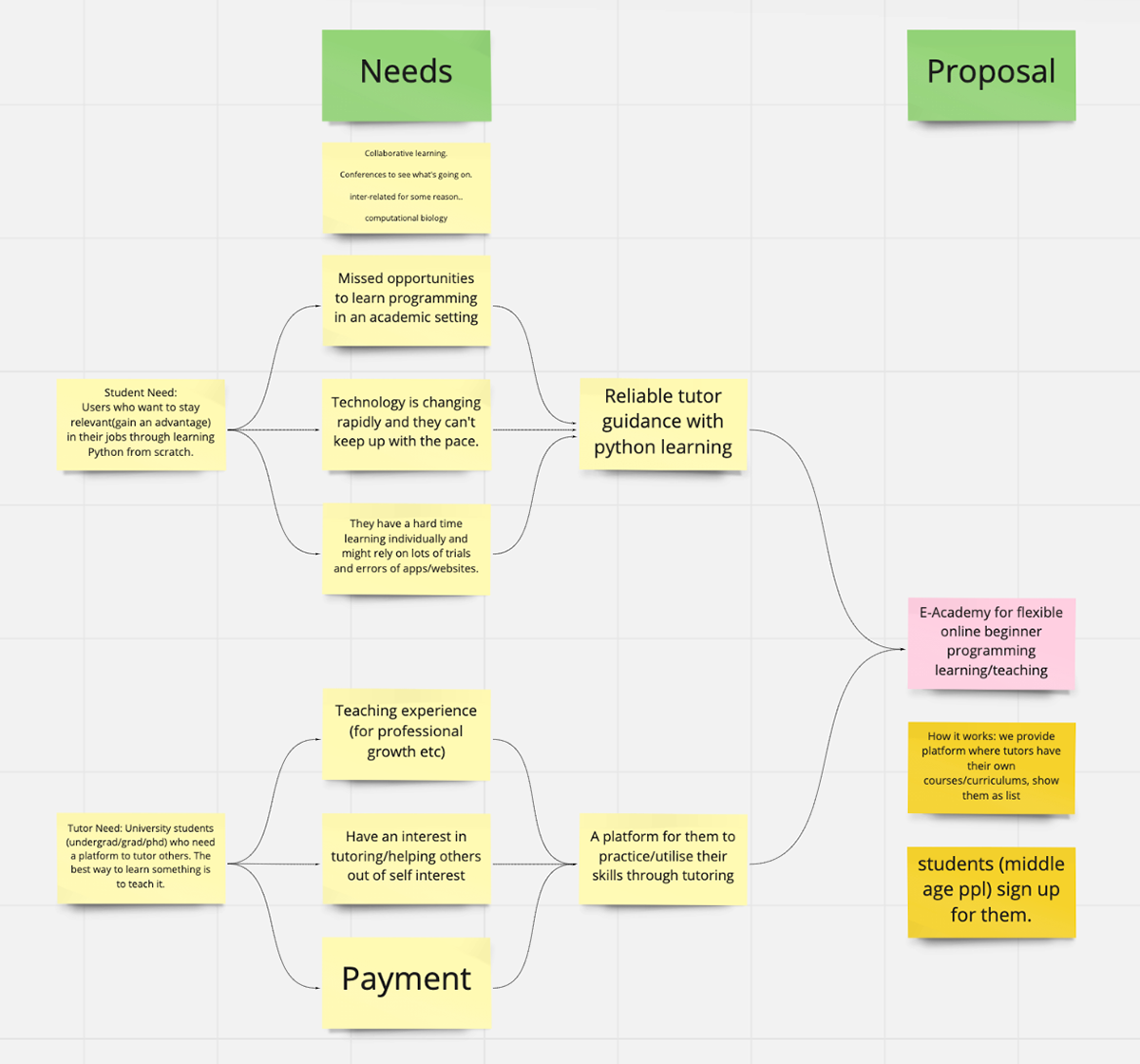
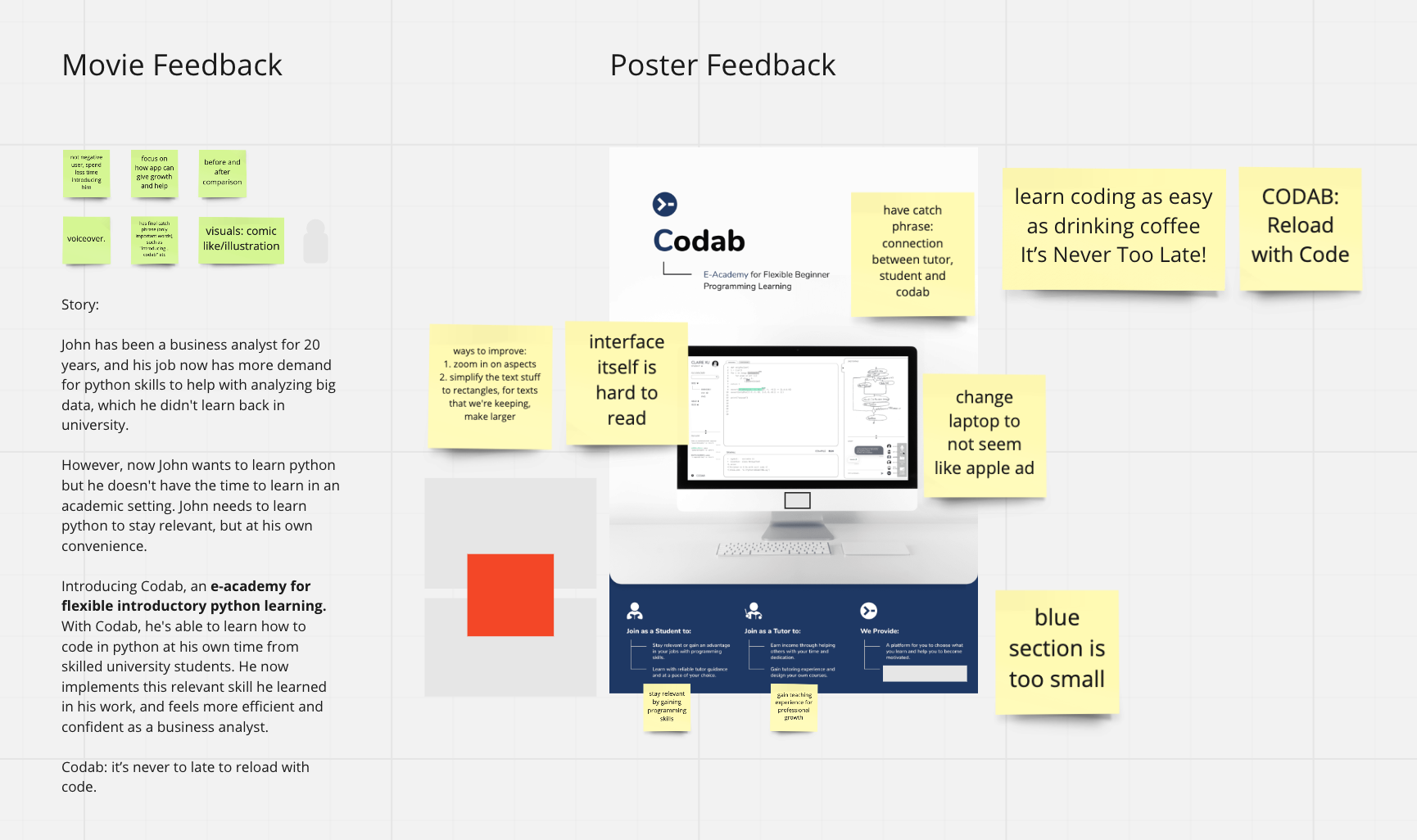
6. Final Showcase & Reflection
The investors at the showcase included: Lynsie Campbell, Jim Jen, Jane K Joseph, Tracy Certo, Jeffrey McDaniel, Olivia T. Payne, PC, Robb Myer, Michael Cham, Nadyli Nuñez, James Gillespie, Lisa Khorey, Jonathan Diven. As we went through rounds of pitches to them, we found that other than clarification questions, investors asked similar questions to us: What makes you more competitive than other services out there, and why python?
We were able to answer these two questions promptly: We differentiate ourselves through utilizing the university students as a valuable source in the education process, and we also allow users to learn the most relevant skills since university students know what’s on-demand. Python is a powerful, easy-to-learn language and is frequently used in multiple industries. More importantly, Python is a new language, which the working class might not have had a chance to learn when they were in school (which we validated with many potential users).
Seeing some investors personally connect with our service boosted our confidence a lot. Such as Lynsie, who thinks coding is really intimidating and we said “that’s exactly what we’re trying to tackle! To make it not scary”. In several discussions, such as the one with Jim, we wished there was more time! During the final vote, we were able to gather 400,000 Andrew bucks in total, and we are really thankful for the time and feedback from every investor.
